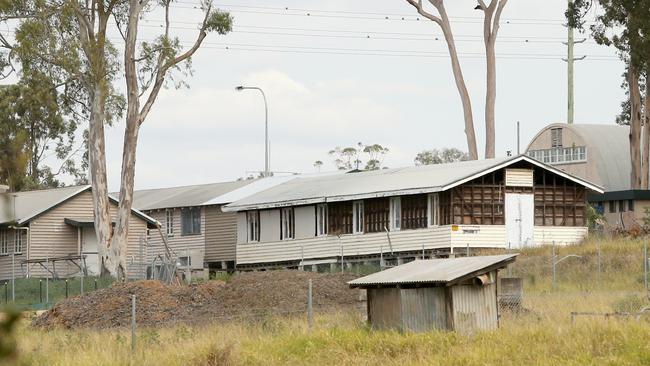By 1946, most Dutch troops had left Camp Columbia.
Ammunition and equipment were either dumped at sea or buried at some isolated spot. The quarry at Acacia Ridge was a convenient dump, and Willawong, also, received its share of disposals.
Some army huts and buildings at Camp Columbia were left on site, and these were used later by migrants or National Servicemen in the 1950’s. Surplus buildings were given away for the cost of transport to churches and clubs as meeting venues, and a few were used as shops in various suburbs.
The wooden structures remaining at Camp Columbia served the more useful purpose as a demobilisation centre for troops returning home as the conflict drew to a close — more so, when the War ended. Also, the Camp served as a recruiting centre for volunteers in the Occupation Forces for Japan (BCOF), and as a training camp for troops to the Korean War. In 1948, the Citizen’s Military Force was reformed at Camp Columbia.
By 1949, much of the land that made up Camp Columbia had been returned to the owners, but a Scheme was on the horizon that would give the Camp a new lease of life. A National Service Scheme was just around the corner
Although the post-War National Service Scheme would not materialise until- August 1951, already by 1948 the camp site was already on the drawing board at the Commonwealth Department of the Interior & Survey Branch — Queensland for the 11th Battalion . Plans for the Camp, still called Camp Columbia in 1950, and documents on land acquisition dated as early as November, 1947, clearly show the relevant Government departments were working well ahead of the National Service Bills to be introduced into Parliament. About 30% the land (1000 acres) of Wacol was consequently compulsorily acquired by the Australian Army.

The scene was now set for the resurgence of activity on what was Camp Columbia for 40,000 young men aged eighteen years, joining the11th National Service Battalion.
The Australian Army did not take all of the former WWII Camp but it still was situated on both side of Ipswich Road. It stretched from Boundary Road in the South, along Station Road to the north and from Wacol railway siding in the west to approx. Kelliher Road in the east.
In 1951, temporary married quarters (kit homes, now Centenary Village) were built north of Ipswich Road. The 11th Battalion was the largest National Service Training camp in the country, with 40,000 “Nashos” trained at Wacol. The last intake was in August 1959. In the 1970s, Wacol Army Camp was renamed Sanananda Barracks. The Regular Army, Training Groups and Cadets used the Wacol Army Camp intermittently.
But gradually the buildings and equipment became dated and in 1999 the Wacol Army Camp was officially closed. In 2005 private Brisbane developer Pradella bought the 105-hectare site from the Department of Defence for about $48 million.

An extensive history of the Wacol Army Camp was written by Noel W. Wallis: Tracing the historical significance of the Wacol Army Camp to the City of Brisbane.
